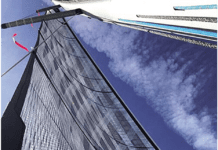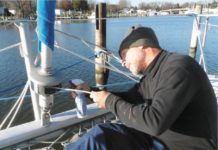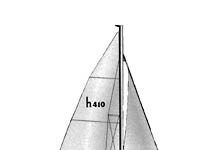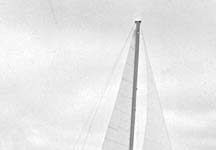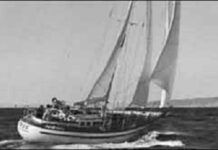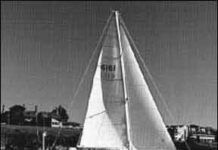Jeanneau Sun Odyssey 43
A company as powerful as Jeanneau can build a big production boat of a quality comparable to custom boats costing much more. The Sun Odyssey 43 fits this description.
Hunter 410
The 410 is billed as an offshore cruiser, something of a departure for a company that has otherwise concentrated on comparatively inexpensive coastal cruisers.
Morgan 46
Lots of room at relatively low cost makes this aging center-cockpit cruiser a prime candidate for upgrading.
C&C Express 110
The first new C&C since the acquisition of the C&C name by Tartan, the 110 is available with a surprising number of keel and rigging choices. She’s fast and fun to sail, but as a cruiser her stowage comes up short.
Cheoy Lee Offshore 41
An innovative Ray Richards design built by the earliest Asian yard is a rock solid cruiser, but with a lot of teak to maintain as well as potentially troublesome metalwork.
FD-12
In the mid-1970 Dutchman Willem Eickholt, part owner at the time of Flying Dutchman Yachts, decided to build his dreamboat. A lifelong sailor, he knew he wanted an aft-cockpit, flush-decked cutter of moderate displacement and minimum wetted surface with a fin keel, skeg rudder, canoe stern, and clipper bow. "I also wanted her to be fast. Long passages bore me," says Eickholt. "Last but not least, I wanted her to be pretty in a timeless way."
Pearson Vanguard
The Vanguard, designed by Philip Rhodes in 1962, remained in production until 1967, totalling 404 hulls. It was preceded by the Invicta, Alberg 35, Bounty II, Ariel, Rhodes 41, and of course the Triton. This line of fiberglass cruisers and sometime racers gave Pearson a strong position in the market. The pedigree of the designers was odorless, and construction quality was good for that particular moment in the timetable of plastic boatbuilding technology.
Deerfoot 61
There is no doubt about the Deerfoot 61's purpose in life. This boat is made for long-distance cruising. "We'd sailed thousands of miles on a 50' foot CCA-designed ketch and like most liveaboards we dreamed of the perfect yacht," says Steve Dashew, author of the Offshore Cruising Encyclopedia. "We never realized this dream would end in a boatbuilding business."
Cal 46
The Cal 46 was introduced in 1967. One reader said he thinks about 10 were built. For several years it was called the Cal Cruising 46. The Cal 2-46, with a redesigned deck, cockpit and interior layout, succeeded it from 1973 until 1976. The Cal 3-46, virtually the same as the 2-46 except for some minor interior changes, was built in 1977 and 1978.
Brewer 12.8/44
The Brewer 12.8 and the Brewer 44 are developments of the Whitby 42, a cruising boat from the board of Ted Brewer. Brewer is one of the great modern cruising boat designers. His boats are well-mannered, attractive and practical. To improve windward performance, a high aspect ratio centerboard extends through the bottom of the 12.8's shallow keel. Since the board is not ballasted, it does not affect stability, but can be used when reaching to shift the center of lateral resistance.













